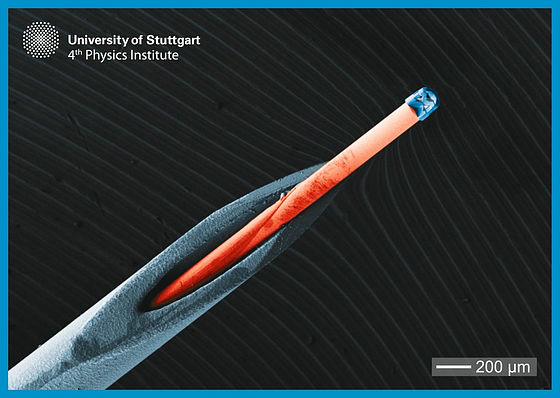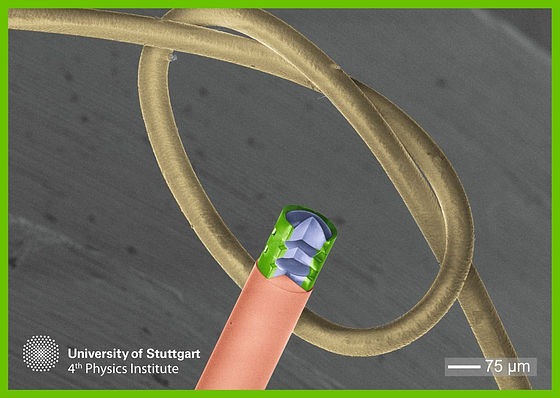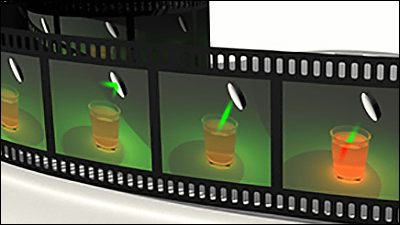The world's smallest, ultra-minimal microlens so that it can fit in an injection needle can be output with a 3D printer

A German research team including Stuttgart University and others announced technology to output minimal multi lenses thinner than hair of only 100 micrometers using a 3D printer.
Two-photon direct laser writing of ultracompact multi-lens objectives: Nature Photonics: Nature Publishing Group
http://www.nature.com/nphoton/journal/vaop/ncurrent/full/nphoton.2016.121.html
3D printing enabling smalles complex micro-objectives
(PDF file)http://www.pi4.uni-stuttgart.de/downloads/press/press_release_microoptics-20160627.pdf
3D-printed device could make surveillance cameras twice the width of a human hair | Daily Mail Online
http://www.dailymail.co.uk/sciencetech/article-3662396/World-s-smallest-lens-twice-width-human-hair-3D-printed-lenses-revolutionise-medical-imaging-nano-robotics.html
Fourth physics laboratory of Stuttgart University (4th Physics Institute), Applied Optics Laboratory (Institute of Applied Optics) Joint research team succeeded in creating ultra-small multi objective lens by 3D printing technology.
The research team has also developed a device that directly outputs three tiny lenses to optical fiber. Endoscopes that reflect the interior of the body through the needle in the future are said to be possible.

It looks like this through the injection needle. Perhaps it will become possible to detect abnormalities in the body simply by injection without swallowing a big gastro camera.

Below is a device with three lenses attached to the tip of the optical fiber and SEM comparing human hair (Scanning electron microscope)image.

The following is a 600 micrometer multilens device actually outputted with a 3D printer, a small grain placed next to it is also a double lens of 120 micrometers outputted by a 3D printer. If you look at the tweezers at the end, you can imagine how neither is the extremely small lens.

CMOS image sensorA state in which double lenses are arranged regularly in a state.

Dr. Timo Gissibl, one of the research teams, said, "The size and shape of current lenses are limited by the limitations of manufacturing technology.Through 3D printers that can output microscopic lenses, medical endoscopes We will be able to adapt from the mirror to the equipment for cell biology, the visual perception of small drone and robot etc, "suggesting the possibility of invisible small camera in every field.

Related Posts:
in Hardware, Posted by darkhorse_log







